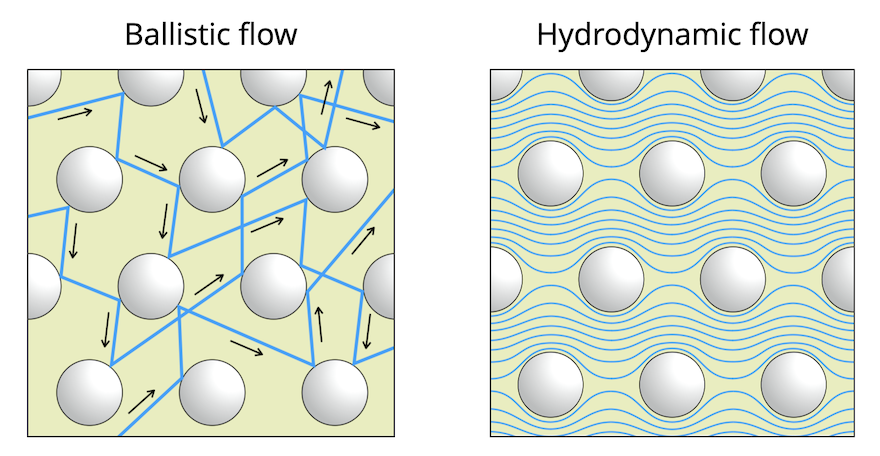Modeling for better thermal management
Monica Cooney
Jun 25, 2025
Keeping electronic devices cool is important when considering both their function and durability, as the temperature influences material properties and energy flow. The temperature of “hot spots” that can be detected impacts the performance of various technologies from smartphones to electric vehicles. The ability for devices to work at faster speeds has stalled in recent years because adding more power to them has resulted in overheating.
When examining heat transport at the nanoscale level, challenges arise because heat behaves fundamentally differently at tiny scales and traditional heat-flow models are inadequate to predict behavior.
Professor Ismaila Dabo and his collaborators, including Albert Beardo, newly appointed as assistant professor at Universitat Autònoma de Barcelona, recently examined the two competing theories - ballistic flow and hydrodynamic flow - by comparing computational predictions against real-world experiments. In the ballistic framework, heat behaves unpredictably with individual particles bouncing around erratically. In the hydrodynamic framework, heat is treated more like a flowing fluid with particles moving in concert. While these models are conflicting in their nature, the research analysis published in npj computational materials advocates for a combination of the theories in order to better understand heat flow in nanoscale systems.

In the ballistic framework, individual particles bounce around erratically. In the hydrodynamic framework, particles flow in concert.
“In order to build faster and more sustainable technologies, we need to develop a better way of approaching thermal management,” said Dabo.
One of the challenges is that it is difficult to predict or measure how vibrational energy moves in 3D at very small scales.
“Our recent analysis shows that the two leading theories for predicting heat transport in nanodevices each capture important physics, and there is potential to use the benefits of each of the existing frameworks,” said doctoral candidate Tara Sabet, who contributed to the study.
In future research into how these models can be better incorporated together, comparisons of the frameworks through detailed simulations and quantum methods could be useful in creating better theories.
“By combining insights from both approaches, we're working toward better tools to manage heat, which could help overcome current performance limitations caused by overheating," said Sabet.
